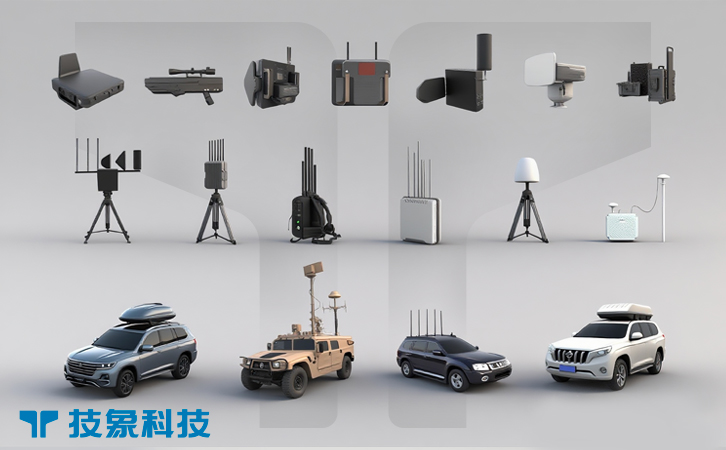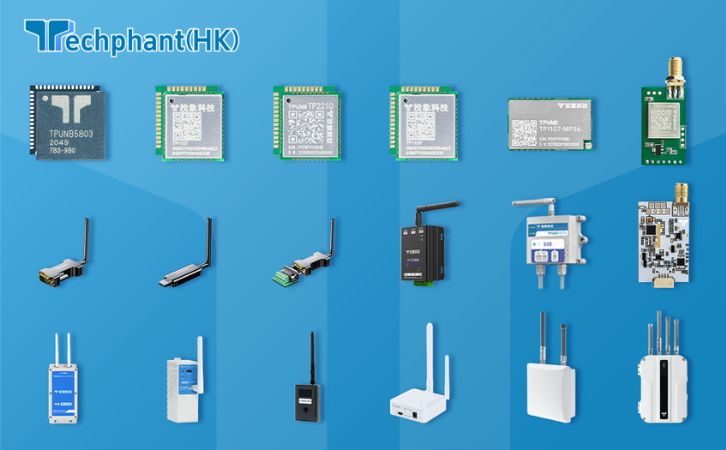The widespread adoption of unmanned aerial vehicles (UAVs), with over 6 million commercial drones in operation worldwide in 2025, has amplified security risks from rogue drones used for smuggling, surveillance, or attacks. Counter-drone systems (C-UAS) are vital to detect these threats, and acoustic sensors stand out for their ability to identify drones through sound signatures, even in environments where radar or RF detection fails. By capturing the unique noise from drone propellers and motors, acoustic systems provide a passive, low-cost layer of defense suitable for urban areas, prisons, or events. This article examines the role of acoustic sensors in C-UAS, their operational mechanics, integration with other technologies, and the challenges and future innovations, underscoring their growing importance in unmasking hidden drones.
I. The Role of Acoustic Sensors in Drone Detection
Acoustic sensors play a crucial role in counter-drone systems by detecting the distinctive sounds produced by UAV propellers and engines, offering a complementary method to visual or electromagnetic detection. In environments with high RF noise or visual obstructions, such as urban canyons or dense foliage, acoustic sensors excel at identifying drones up to 500 meters away, providing early warnings for security responses. In 2025, with drone incursions at U.S. airports exceeding 400 in the first quarter, acoustic systems help differentiate UAVs from other noise sources, reducing false alarms in crowded settings.
These sensors use microphone arrays to capture audio data, analyzing frequencies typically between 2-10 kHz where drone propellers generate unique harmonics. Systems like Squarehead’s Discovair or Dedrone’s acoustic modules are deployed at prisons to prevent smuggling, detecting night-time drops that evade cameras. Military applications include forward bases in Ukraine, where acoustic sensors spot low-flying reconnaissance drones amid battlefield noise. The passive nature—no emissions—makes them stealthy, ideal for covert operations, and their low power consumption (under 5 watts) suits remote or mobile setups. While limited by ambient noise, acoustic sensors fill gaps in multi-layered C-UAS, ensuring comprehensive coverage against hidden drones that exploit visual or signal-based blind spots.
II. Operational Mechanics and Advancements
Acoustic sensors operate by deploying microphone arrays that record sound waves, using algorithms to isolate drone-specific signatures from background noise. In 2025, advanced systems employ beamforming, where multiple microphones focus on sound directions to triangulate a drone’s location with accuracy up to a few meters. The mechanics involve spectral analysis, identifying harmonic patterns from propeller rotations—quadcopters produce distinct four-blade tones—while AI filters out irrelevant sounds like traffic or birds.
Advancements include machine learning models trained on millions of audio samples, achieving 90% detection rates in noisy environments, as seen in Dedrone’s 2025 updates. Portable units, weighing under 5 kg, like those from DroneShield, integrate with apps for real-time alerts, suitable for event security. Directional microphones extend ranges to 1 km in quiet areas, and noise-cancellation tech, borrowed from consumer audio, improves urban performance. A 2025 trial at a European stadium used acoustic sensors to detect a drone filming illegally, pinpointing its position amid crowd noise. These mechanics make acoustic detection cost-effective (under $10,000 per unit) and adaptable, though wind or heavy rain can distort sounds, requiring hybrid approaches for reliability.
III. Integration with Broader Counter-Drone Systems
Acoustic sensors are most effective when integrated with other C-UAS technologies, creating a multi-layered defense that compensates for individual limitations. Integration fuses acoustic data with radar for long-range tracking, RF for signal confirmation, and optical cameras for visual verification. AI platforms like DedroneTracker combine these inputs, using acoustic signatures to validate radar alerts, reducing false positives by 80% in 2025 urban deployments.
In prisons, acoustic sensors integrate with jamming systems to trigger neutralization upon detection, as in a 2025 U.S. facility that paired them with RF jammers to stop smuggling drones. Military setups, like the U.S. Marine Corps’ L-MADIS, link acoustics with lasers for precise targeting, countering autonomous drones that emit no RF signals. Command-and-control software, such as Northrop Grumman’s AiON, automates responses, prioritizing acoustic-confirmed threats. A 2025 airport pilot integrated acoustics with EO/IR cameras, detecting drones in fog where visuals failed. Challenges include data synchronization, as acoustic latency (due to sound speed) requires AI compensation, and interoperability between proprietary systems. The 2025 Counter UAS Technology USA Conference emphasized open standards to streamline integration, ensuring acoustic sensors serve as a vital, noise-resilient layer in comprehensive C-UAS frameworks.
IV. Challenges and Future Innovations
Acoustic sensors face notable challenges in counter-drone applications. Ambient noise in urban or industrial areas can overwhelm signals, reducing accuracy to below 70% in high-decibel environments like construction sites. Range limitations (typically under 500 meters) make them unsuitable for vast areas, requiring multiple units and increasing costs. Wind distortion or echoes from buildings further complicate triangulation, as noted in 2025 urban tests where false positives rose 25% in windy conditions.
Regulatory hurdles include privacy concerns, as microphones may capture conversations, necessitating data anonymization protocols in 2025 policy debates. Costs, while low (starting at $5,000), can escalate for large arrays covering prisons or bases. Future innovations address these: by 2030, AI advancements will filter noise with 95% accuracy using neural networks mimicking human hearing. Directional arrays with beamforming will extend ranges to 1 km, and integration with edge computing will reduce latency. Biodegradable, solar-powered sensors, tested in 2025 EU trials, will lower environmental impact. Global standards, proposed at the 2025 Maritime Counter UAS Conference, aim to harmonize privacy rules. These developments will enhance acoustic sensors’ reliability, making them indispensable for unmasking hidden drones in diverse settings.
Conclusion
Acoustic sensors are a powerful tool in counter-drone systems, unmasking hidden UAVs through sound signatures in environments where other methods falter. Their role in prisons, military bases, and events demonstrates versatility, with mechanics like beamforming and AI driving accuracy. Integrated with radar, RF, and optical technologies, they form robust defenses, though challenges like noise and range persist. Future innovations in AI and modular designs promise greater effectiveness and affordability. By investing in acoustic C-UAS, stakeholders can enhance security against evolving drone threats in 2025, ensuring comprehensive protection with minimal disruption.



